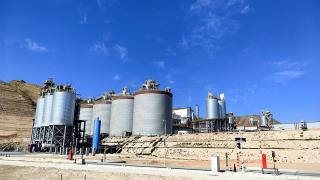There are very few cement plant locations where a single, locally-available raw material source will be suitable for producing cement clinker. Even when the quantity of imported material is small, the costs of transporting, handling, proportioning and feeding extra raw materials can mount up and with each additional material another variable is introduced. So how does the benefit of sweetening the mix weigh against the disadvantages?
Although the presence of ‘natural’ cement raw material as a single deposit is rare, many quarries contain materials of more than one chemical composition. It may be chalk over marl, limestone over clay, interbedded limestone and shale, folded and faulted beds of any combination of limestone, clay and shale. In whichever combination, there is an inherent advantage in having the majority of the raw materials’ requirement in a single quarry. An example where cement could satisfactorily be made using only material from a single quarry is found in the southeast of England, the birthplace of Portland cement, where chalk – a soft relatively pure limestone – frequently overlies a marl, which is a chalk with a substantial clay content. The marl, in turn, overlies a very fine sand and then a clay.
